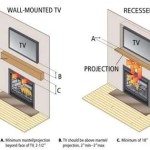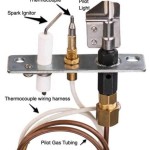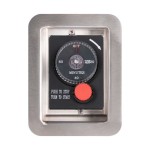Modern Direct Vent Fireplaces: Efficiency and Aesthetics Combined
Modern direct vent fireplaces have revolutionized the way homeowners experience the warmth and ambiance of a fire. Unlike traditional fireplaces, direct vent models offer enhanced safety, efficiency, and design flexibility, making them a popular choice for new construction and renovations alike. These fireplaces operate on a closed combustion system, drawing air from outside the home and venting exhaust gases directly outdoors, eliminating the need for a chimney and minimizing heat loss.
Understanding the key features and benefits of modern direct vent fireplaces is crucial for making an informed decision when considering incorporating one into a home. This article explores the mechanics, advantages, design considerations, and installation aspects of these innovative heating appliances.
How Direct Vent Fireplaces Work
The fundamental principle behind a direct vent fireplace is its sealed combustion system. This system utilizes a dual-chamber venting system. One chamber draws fresh air from outside the home, providing the oxygen necessary for combustion. The other chamber expels exhaust gases, including carbon monoxide and other byproducts of burning fuel, directly outside. This closed-loop system prevents the exchange of air between the fireplace and the interior of the home, enhancing safety and efficiency.
The dual-chamber vent typically consists of two concentric pipes, one nested inside the other. The outer pipe draws in fresh air, while the inner pipe exhausts combustion gases. This configuration allows for efficient heat transfer, as the incoming air is preheated by the outgoing exhaust, further increasing the overall efficiency of the fireplace.
Direct vent fireplaces can operate on various fuel types, including natural gas and propane. A gas valve regulates the flow of fuel to the burner, while an electronic ignition system initiates the combustion process. Safety features, such as flame sensors and automatic shut-off mechanisms, are integrated into the system to prevent gas leaks and ensure safe operation.
The sealed combustion chamber also contributes to improved air quality within the home. By preventing the infiltration of combustion byproducts, direct vent fireplaces minimize the risk of respiratory problems and other health issues associated with traditional fireplaces. This is particularly important for individuals with allergies or sensitivities to airborne pollutants.
Advantages of Direct Vent Fireplaces
Direct vent fireplaces offer a multitude of advantages over traditional wood-burning fireplaces, contributing to their widespread popularity among homeowners. These benefits span safety, efficiency, and convenience, making them a compelling alternative for modern living.
Enhanced Safety: The closed combustion system eliminates the risk of carbon monoxide poisoning, a significant concern with traditional fireplaces. By venting exhaust gases directly outdoors, direct vent fireplaces ensure that no harmful byproducts enter the living space. Furthermore, the sealed system prevents sparks and embers from escaping, reducing the risk of fire hazards.
Improved Efficiency: Direct vent fireplaces are significantly more efficient than traditional fireplaces. The sealed combustion chamber minimizes heat loss, allowing more of the heat generated by the fire to be directed into the room. The preheating of intake air by exhaust gases further enhances efficiency, reducing energy consumption and lowering heating costs. Some models can achieve efficiencies of 70% or higher, compared to the significantly lower efficiencies of traditional fireplaces.
Design Flexibility: Unlike traditional fireplaces, direct vent models do not require a conventional chimney. This allows for greater flexibility in installation, as the fireplace can be vented horizontally through an exterior wall. This opens up a wider range of design possibilities, allowing homeowners to install fireplaces in locations where a chimney would not be feasible. Direct vent fireplaces can be installed in virtually any room of the house, including basements, bedrooms, and even bathrooms.
Convenience and Ease of Use: Direct vent fireplaces are incredibly convenient to use. They ignite with the flip of a switch or the press of a button, eliminating the need for kindling, wood chopping, and ash removal. Many models also come with remote controls, allowing homeowners to adjust the flame height, temperature, and fan speed from the comfort of their couch. The ease of use makes direct vent fireplaces a practical and enjoyable heating option for busy homeowners.
Reduced Maintenance: Compared to traditional fireplaces, direct vent models require minimal maintenance. There is no need to clean a chimney or remove ashes. Regular maintenance typically involves occasional cleaning of the glass front and inspection of the venting system.
Design and Installation Considerations
While direct vent fireplaces offer numerous advantages, careful planning and consideration are essential for a successful installation. Factors such as aesthetic preferences, heating requirements, and building codes should be taken into account during the design and installation process.
Aesthetic Choices: Modern direct vent fireplaces are available in a wide range of styles, sizes, and finishes to complement any décor. Options include traditional log sets, contemporary glass media, and minimalist linear designs. The choice of firebox shape, surround material, and mantel design can significantly impact the overall aesthetic of the fireplace. Homeowners should carefully consider their personal preferences and the existing style of their home when selecting a direct vent fireplace.
Sizing and Heating Capacity: The size and heating capacity of the fireplace should be appropriate for the space it is intended to heat. A fireplace that is too small may not provide sufficient warmth, while a fireplace that is too large may overheat the room. Factors such as room size, insulation levels, and climate should be considered when determining the appropriate heating capacity. BTU (British Thermal Unit) ratings provide a measure of the fireplace's heating output.
Venting Options: Direct vent fireplaces can be vented either horizontally through an exterior wall or vertically through the roof. Horizontal venting is typically less expensive and easier to install, but it may require careful planning to ensure that the vent terminal is located in a safe and aesthetically pleasing location. Vertical venting allows for greater flexibility in fireplace placement but may require more extensive construction to install the venting system.
Installation Requirements: Direct vent fireplaces must be installed in accordance with manufacturer's instructions and local building codes. Proper venting is crucial for ensuring safe and efficient operation. It is essential to hire a qualified and experienced installer to ensure that the fireplace is installed correctly and that all safety requirements are met. Many jurisdictions require permits for fireplace installations, and inspections are often performed to ensure compliance with building codes.
Fuel Type: The choice between natural gas and propane depends on the availability of gas lines and the cost of fuel in the area. Natural gas is typically less expensive than propane, but it may not be available in all locations. Propane requires a separate tank, which must be properly installed and maintained. Both natural gas and propane-fueled fireplaces offer comparable performance and efficiency.
Safety Features: All direct vent fireplaces should be equipped with safety features such as flame sensors, automatic shut-off mechanisms, and childproof controls. These features help to prevent gas leaks and ensure safe operation. It is important to read the manufacturer's instructions carefully and to familiarize oneself with the safety features of the fireplace before operating it.
Modern direct vent fireplaces represent a significant advancement in heating technology, offering a combination of efficiency, safety, and aesthetic appeal. By understanding the key features, advantages, and design considerations, homeowners can make informed decisions and enjoy the warmth and ambiance of a fire without the drawbacks of traditional fireplaces.
The initial cost of a direct vent fireplace, including installation, can be higher than some other heating alternatives, however the long-term benefits in terms of energy efficiency and reduced maintenance often outweigh the initial investment.

Empire Boulevard Linear Direct Vent Gas Fireplace 60 Woodland

Slayton 60 Direct Vent Linear Gas Fireplace Kozy Heat

Superior 84 Direct Vent Contemporary Linear Gas Fireplace Drl6084 Us

Empire Tahoe Premium 42 Cf Cont Direct Vent Gas Fireplace Dvcc42bp North Country Fire

Superior Drl3545 45 Direct Vent Contemporary Linear Fireplace

Mezzo Series Direct Vent Gas Fireplace By Heat Glo

Direct Vent Gas Fireplaces Spark Modern Fires

Freestanding High Efficiency Direct Vent Gas Fireplaces Inserts Stoves Godby Hearth And Home

40 Contemporary Direct Vent Glass Media Signature Series Fireplace With Ceramic Porcelain Interior And Remote By Superior Drc6300 Drc6340 F2210

Superior 60 Inch Dv Contemporary Linear Gas Fireplace Drl4060 North Country Fire
Related Posts








